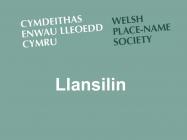Content can be downloaded for non-commercial purposes, such as for personal use or in educational resources.
For commercial purposes please contact the copyright holder directly.
Read more about the The Creative Archive Licence.
Description
Pennant c.1160, 1254, 1377, c.1679, Penant Mellagel c.1291, Pennant’ Monachorum 1293, Pennant Malankith 1482, Penant, Pennaunt 1535, Pennant Melanghelth 1559, penant mallangell c.1566, Pennant, Pennant Mylanghell 16g. ddiw., Pennant Melangell c.1640, Pennant Moel Angell 1784
As Pennant [Twymyn] with pers. name of St Melangell – recorded as a daughter of Cyfwlch in ‘Bonedd y Saint’, a 12th C compillation of pedigrees , and also in the poetry of Guto’r Glyn (1445-75) and Lewys Glyn Cothi (c.1420-89); the latinised form Monacella probably accounts for the error Monachorum, 'of the monks' 1293. A shrine of St Monacella (Melangell' in Welsh).
Thomas Pennant (the Welsh antiquarian), mentions a shrine of St Monacella and relates that she was a daughter of an Irish monarch, that she vowed celibacy and fled to this locality to avoid marriage. Brochwel Ysgithrog, king of Powys, came across her when hunting and Melangel protected a hare from his hunting dogs. when writing of St Monacella (or ‘Melangell’ in Welsh), says that she was of Irish descent, and had taken a vow of clebacy and fled from the area to avoid getting marries. The king of Powys, Brochwel Ysgithrog, happened upon her whilst hunting, and Melangell protected a hare from his hunting dogs. Out of respect for this deed, Brochwel gave her land for a sanctuary where she is reputedly buried. A fragment of the legend survives in a 16th century manuscript. Whatever the truth of the story, Pennant Melangell was certainly a place of pilgrimage in 1526.






Do you have information to add to this item? Please leave a comment
Comments (0)
You must be logged in to leave a comment